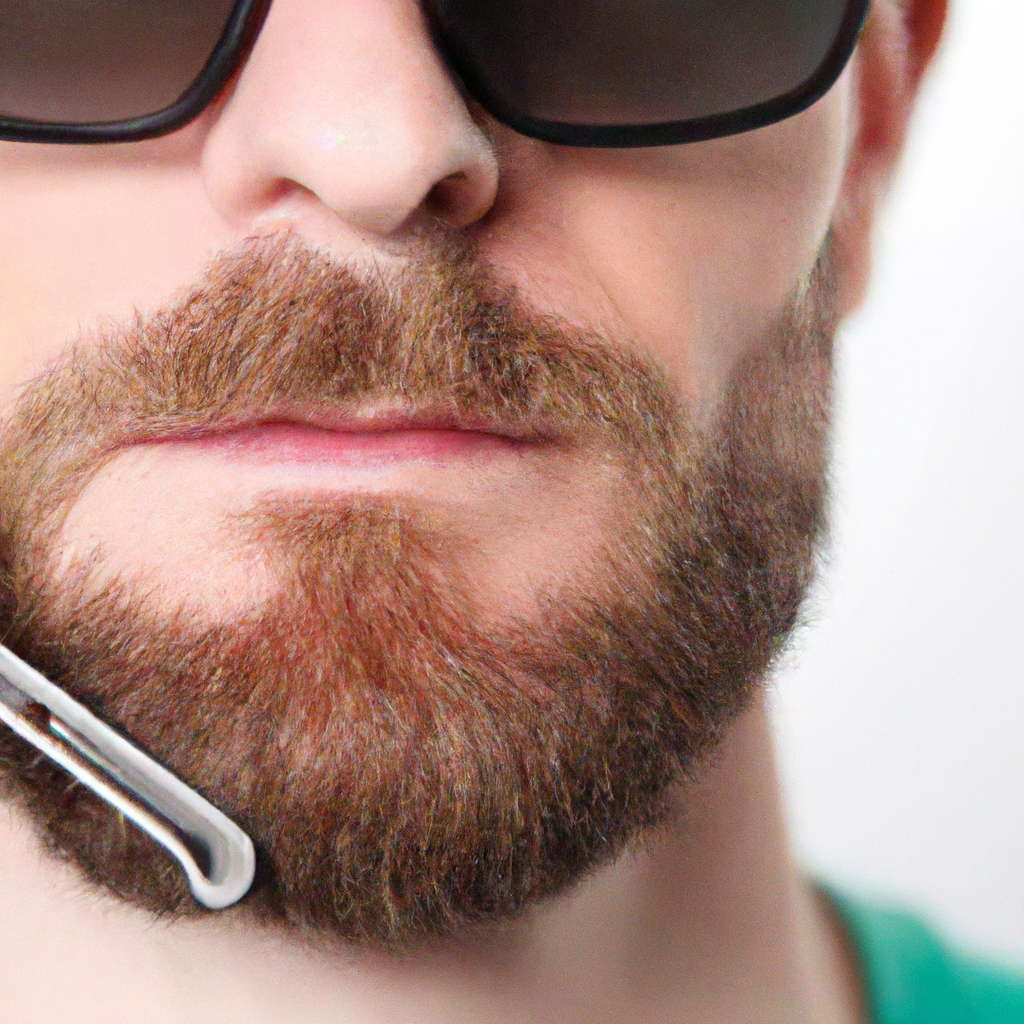Imagine finally achieving the perfectly groomed and oh-so-sleek beard you’ve always dreamt of. Picture yourself turning heads as you confidently strut by, your beard looking impeccably smooth and well-tamed. In this ultimate guide, we’ll unravel the secrets to getting your beard to lay flat, revealing tips and tricks that will transform your scruffy whiskers into a work of art. From proper grooming techniques to product recommendations, get ready to unlock the ultimate beard journey that will leave you looking effortlessly suave. So grab your comb, buckle up, and embark on this incredible adventure towards a sleek and smooth beard that will make heads turn in awe.

Understanding Beard Growth
Beard growth is a fascinating process that varies from person to person. Understanding the different stages of beard growth can help you better manage and care for your facial hair.
The Different Stages of Beard Growth
There are three main stages of beard growth: the anagen (growth) phase, the catagen (transition) phase, and the telogen (resting) phase. During the anagen phase, which typically lasts for several years, your beard hair grows at a steady rate. In the catagen phase, the hair follicles stop producing new hair and prepare for the next stage. Finally, during the telogen phase, the older hair strands shed and new ones begin to grow. This cycle repeats continuously, resulting in the growth of your beard.
Factors that Affect Beard Growth
Various factors can impact the growth of your beard. Genetics play a significant role, as they determine both the growth rate and the thickness of your facial hair. Hormonal levels, particularly the presence of testosterone, also contribute to beard growth. Additionally, age, overall health, and lifestyle choices can influence the growth and appearance of your beard. By understanding these factors, you can better manage your expectations and develop a beard care routine that suits your specific needs.
Common Beard Growth Issues and Solutions
While most men desire a full and luscious beard, many face common growth issues along the way. Patchiness, slow growth, and uneven hair distribution are among the most common challenges. To address patchy beards, consider grooming techniques that minimize the appearance of patchiness, such as trimming your beard shorter or styling it in strategic ways. For slow growth, maintaining a healthy diet and lifestyle can potentially enhance beard growth. Additionally, using beard growth supplements or consulting with a professional may offer solutions. Remember, every beard is unique, and patience is key.
Creating a Beard Care Routine
To maintain a healthy and well-groomed beard, you need to establish a proper care routine. This routine should encompass various aspects, such as washing, conditioning, trimming, moisturizing, and regularly brushing your beard. Let’s explore each of these steps in more detail.
Washing and Conditioning Your Beard
Washing your beard is crucial to remove dirt, oil, and debris that can accumulate throughout the day. However, it’s important to avoid using regular shampoo, as it can strip the natural oils from your facial hair and skin, leading to dryness and irritation. Instead, opt for a beard-specific shampoo or a gentle, sulfate-free cleanser. Follow up with a conditioner formulated for beards to moisturize and soften the hair. Depending on your personal preference and the condition of your beard, you may choose to wash and condition your beard every day or every few days.
Trimming and Shaping Your Beard
Regular trimming and shaping are necessary for maintaining a well-groomed and stylish beard. Invest in a high-quality pair of beard scissors or a beard trimmer with various length settings to achieve your desired look. Start by trimming the edges and necklines to create clean lines. Then, carefully trim any stray or excessively long hairs to ensure a tidy appearance. Remember to step back and assess your beard from multiple angles to achieve symmetry and balance.
Moisturizing and Hydrating Your Beard
Just like the hair on your head, your beard requires moisture to stay healthy, soft, and manageable. Applying a quality beard oil or beard balm regularly can provide essential hydration and nourishment to both your facial hair and the underlying skin. Look for products that contain natural oils, such as jojoba oil or argan oil, as they mimic the skin’s natural oils and offer excellent moisturizing properties. These products can also help prevent itchiness and beard dandruff.
Using Beard Oils and Balms
Beard oils and balms are essential products for maintaining a healthy and well-groomed beard. They provide a multitude of benefits, including moisturizing the hair and skin, reducing itchiness, and promoting hair strength and growth. Beard oil is typically applied after washing and conditioning your beard, while beard balm can be used for more control and styling. When choosing these products, consider your preferred scent, the ingredients used, and their specific benefits for your beard type and needs.
Regularly Brushing and Combing Your Beard
Brushing and combing your beard not only help to distribute natural oils and remove tangles but also encourage the hair to grow in the desired direction. Invest in a high-quality beard brush or comb that suits the length and texture of your beard. Brush your beard gently and regularly, starting from the roots and working your way down to the ends. This practice can help train your facial hair to lay flat and promote a neater appearance.

Dealing with Beard Itch and Irritation
While beard growth comes with many benefits, it can sometimes be accompanied by itchiness and irritation. Understanding the causes of beard itch and implementing preventive measures and soothing treatments are essential for a comfortable beard-growing experience.
Understanding Beard Itch
Beard itch is a common occurrence during the early stages of beard growth. It is primarily caused by dryness and irritation of the skin underneath the beard. As the hair grows, it can pull on the skin’s surface, leading to discomfort and itchiness. Additionally, the accumulation of dead skin cells and bacteria in the beard can further contribute to itchiness. It’s important to address these issues promptly to prevent further irritation.
Preventing Beard Itch and Irritation
Prevention is the key to avoiding beard itch and irritation. To prevent dryness, make sure to wash your beard with a gentle cleanser and follow up with a beard conditioner to maintain adequate moisture levels. Avoid using hot water while washing, as it can strip away the natural oils from the skin and hair. Pat your beard dry rather than rubbing it vigorously to minimize irritation. Additionally, keep the skin underneath your beard clean by regularly washing it and exfoliating to remove dead skin cells.
Soothing and Treating Beard Itch
If you’re experiencing beard itch, there are several remedies you can try to soothe your skin and alleviate the discomfort. Applying a beard oil or balm after washing can provide immediate relief by moisturizing the skin and reducing dryness. Anti-itch beard oils containing ingredients like tea tree oil or lavender oil can also provide a cooling sensation and reduce inflammation. If the itch persists or becomes severe, consider consulting with a dermatologist who can recommend specific treatments or medications to address the issue.

Managing Beard Dandruff

